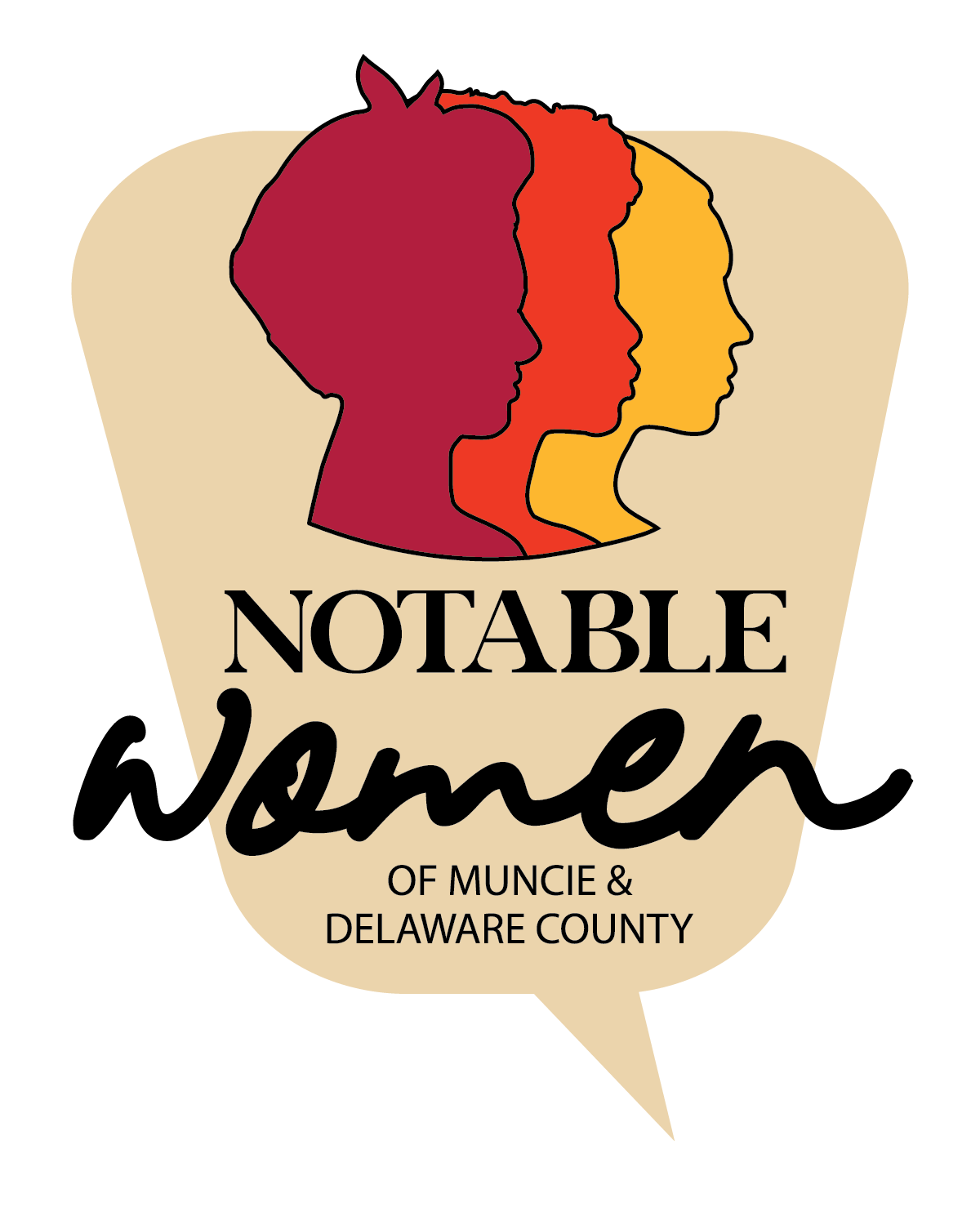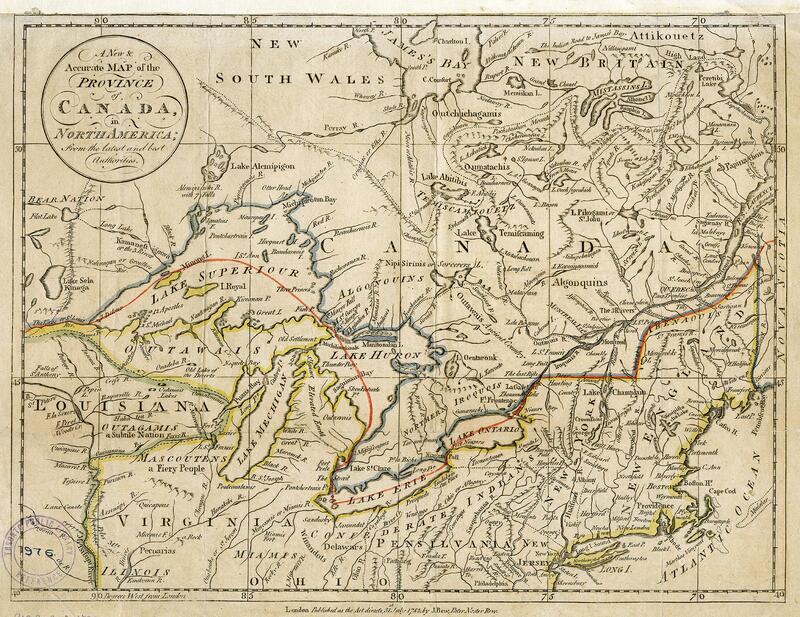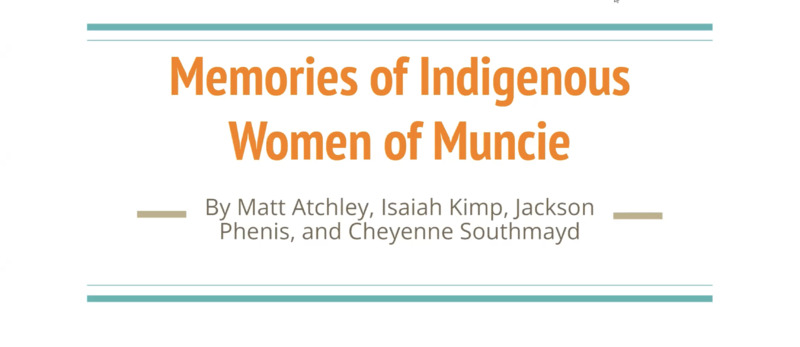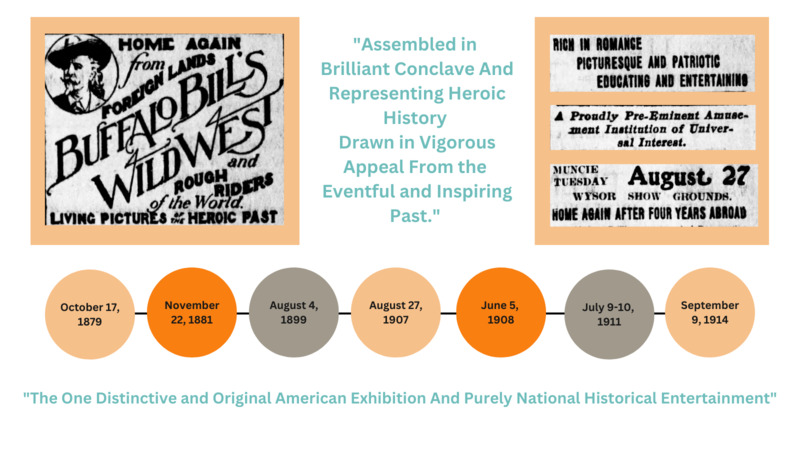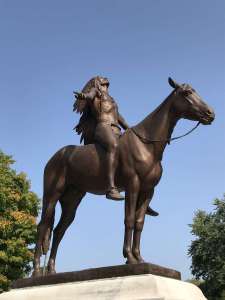Memories of Indigenous Muncie
In the early 1900s, few Munsonians encountered indigenous Americans regularly. The city of Muncie was founded in the 1820s and had replaced Lenape communities (sometimes called Delaware after the English governor of the colony of Virginia, Baron de la Warr) that spoke the Munsee and Unami languages. In contrast the city's growing immigrant population, there were few traces of the indigenous past.
Under pressure from the Northwest Indian War (1785-95), the Lenape people had traveled from Pennsylvania, through Ohio and were land-less. Some bands had split and settled in southern Canada, while others turned towards the Indiana Territory. The map below charts the presence in the years before the War, of indigenous Americans, including the Miami (also Myaamiaki), the Delaware, the Winandots, the Outagami, the Mascoutens, and the Iroquois.
By 1796, Miami Indigenous Americans who controlled the land around the White River, invited Lenape tribes to settle on the land between the river's east and west forks. These Lenape villages sheltered Unami and Munsee speakers, who farmed, fished, and hunted until the 1820s. The Miami's generosity offered protection at a time when disease, alcoholism, and violence made life unstable. Nevertheless, with the establishment of the state of Indiana in 1816, the American government increased its efforts to purchase indigenous land and move communities west beyond the Mississippi River. Although these efforts were contrary to indigenous wishes, they were successful. In 1821 most of the White River Lenape moved to Missouri and by 1830 they had traveled to Kansas. After the American Civil War, the Lenape transferred to northeast Oklahoma, where they remain today as the Delaware Tribe of Indians.
Chris Flook's research has shown how an early settler tried to profit from the government's treaties with indigenous heirs. Muncie's so-called "founding citizen" Goldsmith Gilbert purchased reservation land awarded by the Treaty of St. Mary's (1818) to an indigenous owner, but only after courts force him to pay. These sellers included the Miami chief Mihšihkinaahkwa's (also called Little Turtle) granddaughter, Pemesahquah (also called Rebecca Hackley), whose land sat on the southern bank of the White River. Although she never lived in Delaware County, its residents retained a version of this indigenous past that was encouraged by contemporary popular indigenous imagery, rather than local history.
This biography video was researched and created by Matt Atchley, Isaiah Kimp, Jackson Phenis, and Cheyenne Southmayd for HIST 200-01 (Spring 2023) at Ball State University.
As the biography video (above) noted, Buffalo Bill's Wild West traveling show had a great impact on how Munsonians thought about the Midwest's indigenous past. Between 1879 and 1914, the show visited Muncie seven times, ensuring that most residents had a chance to see it, no matter their age. The show's frequent visits also suggest that Munsonians were avid attendees, who made the stop worthwhile.
The newspaper advertisement (below) for the 1907 visit, highlights the show's historical and patriotic character. "Buffalo Bill" Cody's reputation for riding, shooting buffalo (bison), and fighting indigenous Americans was built in the recent past of the 1860s and 1870s. Cody's enlistment and participation in the US Civil War and the Frontier Wars gave his stories of adverture on the plains a sort of authority. Yet this show was a theatrical narrative that was intended to entertain paying audiences and not provide an evidence-based account of indigenous life or American expansion.
Nevertheless, the audiences saw indigenous performers and used Cody's narrative of American might and fearsome Indigenous bravery and skill to fill gaps in their knowledge about the past. Nostalgia for a period dimly remembered by many citizens and that was in stark contrast to urban factory life encouraged ticket sales and spread knowledge.
In 1893 alone, approximately three million people attended Cody's traveling show. They witnessed a stereotyped Indigenous American, who lived in a tipi, hunted for food, and dressed in a war bonnet. The show re-enacted General George Custer's "last stand" at the Battle of Little Bighorn (1876) and an indigenous attach on a cabin that Cody's cowboys thwarted. After witnessing an indigenous victory and then defeat, audiences could wander through "an Indian Village, transplanted from the Plains." Advertising materials emphasized the authenticity of the performers, their costumes, and the re-creations.
In 1885, Sitting Bull, a Hunkpapa Lakota leader, briefly joined the Wild West show. "The Sitting Bull Connection" toured parts of Canada and the northern United States. His popularity could have raised awareness about reservation debates, but mostly it reinforced stereotypes that Cody sold about Indigenous nobility and the myth of the "vanishing Indian." The show's patriotic core lay in asserting that North America would come entirely under the control of non-Indigenous people. The audience's curiosity about Sitting Bull and the "Indian village" revealed how distant more Indigenous communities were from American cities like Muncie.
Cody was not the only person who connected patriotism with memorializing Indigenous culture. The Daughters of the American Revolution (DAR) was an organization of women descended from revolutionary soldiers, who likewise built a narrative of American freedom on the loss of Indigenous communities. From 1897, Muncie's DAR chapter cultivated historical knowledge that reached far beyond 1776. In 1915 the chapter announced its plan to erect a monument on the site of the Lenape settelemnt called Uten-Ink (also Buckhongehelas' Town and Wapicomikoke). In 1917 the chapter erected another monument to the settle ment called Wah-Pe-Kah-Me-Kunk, which also memorialized the death of Joshua (in 1806), a Mahican Moravian man.
At the height of Buffalo Bill's Wild West show's fame, sculptor Cyrus Dallin was creating his series of equestrian statues of Indigenous men. Dallin created the four statues between 1890 and 1908 to critical and popular acclaim. Scholars have noted the statues' generic character and how the series became an emblem for the myth of the "vanishing Indian." In 1929, Dallin agreed made a full-size version of his Appeal to the Great Spirit statue (left) as a monument to the late EB Ball.
While these monuments reminded Munsonians of a version of the Indigenous past and were sponsored by a local women's group, they ignore the female Indigenous experience. Also, there was little interest in contemporary Indigenous groups, only the staged versions that appeared in the DAR and Buffalo Bill's patriotic narratives. Historian James J. Buss has noted the complexity of settler memories and the fact that colonial histories, like these, rely in large part on "the power of its own narratives."
To learn more about how this project came together, balancing two histories of Muncie, watch this methodology video, which was researched and created by Matt Atchley, Isaiah Kimp, Jackson Phenis, and Cheyenne Southmayd.
The DAR and the Household of Ruth were not the only women's organizations in town. Click on Edith Love to learn more about how educated women spent their time in Muncie in the 1890s and in Chicago in the 1930s.
